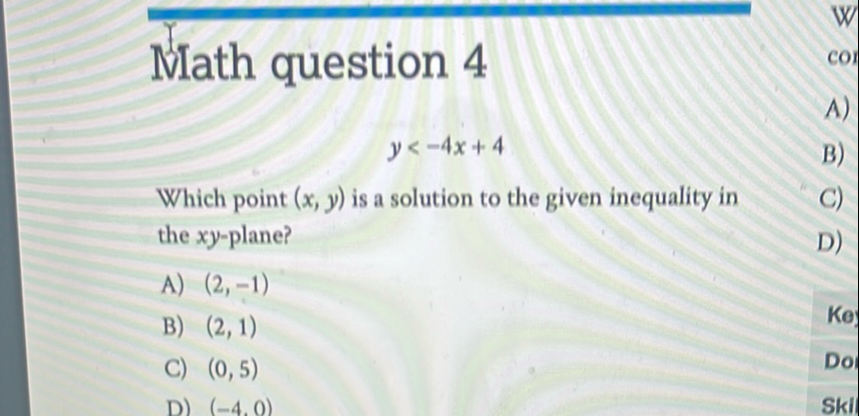Full solution
Q. Which point is a solution to the given inequality in the -plane?A) B) C) D)
- Understand the inequality: Understand the inequality.The inequality y < -4x + 4 represents a region in the -plane below the line . We need to find which of the given points lies in this region.
- Test point A : Test point A .Substitute and into the inequality to check if it holds true.-1 < -4(2) + 4-1 < -8 + 4-1 < -4This is true, so point A is a solution to the inequality.
- Test point B : Test point B .Substitute and into the inequality to check if it holds true.1 < -4(2) + 41 < -8 + 41 < -4This is false, so point B is not a solution to the inequality.
- Test point C : Test point C .Substitute and into the inequality to check if it holds true.5 < -4(0) + 45 < 0 + 45 < 4This is false, so point C is not a solution to the inequality.
- Test point D : Test point D .Substitute and into the inequality to check if it holds true.0 < -4(-4) + 40 < 16 + 40 < 20This is true, so point D is a solution to the inequality.
More problems from Solve quadratic inequalities
QuestionGet tutor help
QuestionGet tutor help
QuestionGet tutor help
QuestionGet tutor help
QuestionGet tutor help
QuestionGet tutor help
QuestionGet tutor help
QuestionGet tutor help

